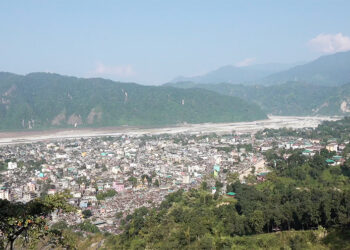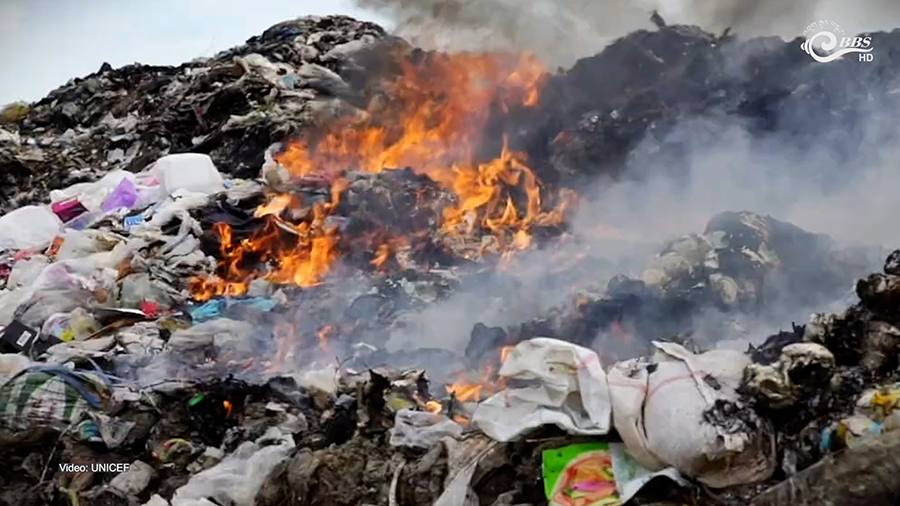 From the workshops that keep our vehicles running to the landfills where waste piles up, toxic substances are silently threatening the health of workers and communities and putting children at greatest risk. Global reports show over 815 million children are exposed to dangerous levels of lead through the air they breathe, the water they drink, and the food they eat. Let’s explore how communities in Bhutan are facing these hidden dangers from toxic exposure.
From the workshops that keep our vehicles running to the landfills where waste piles up, toxic substances are silently threatening the health of workers and communities and putting children at greatest risk. Global reports show over 815 million children are exposed to dangerous levels of lead through the air they breathe, the water they drink, and the food they eat. Let’s explore how communities in Bhutan are facing these hidden dangers from toxic exposure.
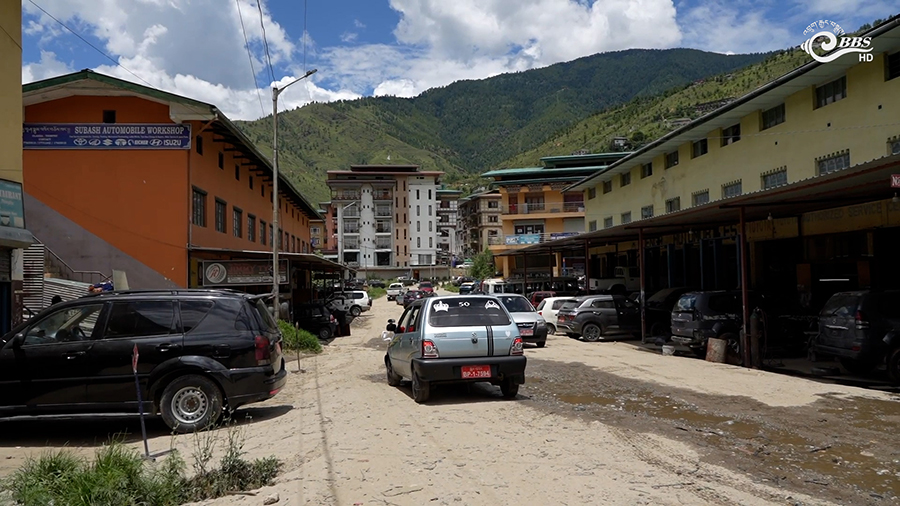 Every day, dozens of vehicles pull into workshops across Bhutan. They leave with new oil, fresh paint, or a new battery, but the waste they leave behind does not just disappear.
Every day, dozens of vehicles pull into workshops across Bhutan. They leave with new oil, fresh paint, or a new battery, but the waste they leave behind does not just disappear.
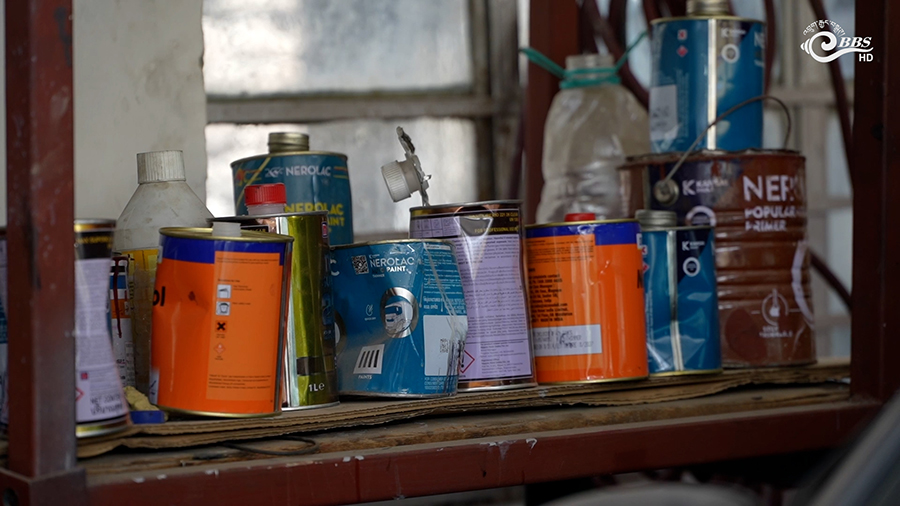 Used oils stained with lead, cadmium, and arsenic seep into the ground or flow into nearby drains. Old lead-acid batteries, cracked brake pads, and discarded vehicle parts containing cadmium and mercury pile up in corners or open yards, often sit in open backyards exposed for months before being sold to scrap dealers.
Used oils stained with lead, cadmium, and arsenic seep into the ground or flow into nearby drains. Old lead-acid batteries, cracked brake pads, and discarded vehicle parts containing cadmium and mercury pile up in corners or open yards, often sit in open backyards exposed for months before being sold to scrap dealers.
Day after day, workers continue to work alongside discarded materials that release toxic chemicals, a danger not only to themselves but to vulnerable children.
For 32-year-old Choki Wangmo, who runs a canteen just above one of the workshops in Olakha, protecting her three-year-old daughter from toxic exposure is a daily struggle.
She tries to keep her daughter inside as much as possible to limit her exposure.
“I have been running the canteen for seven months now. And to keep my daughter safe from all the chemicals outside, I keep her inside the canteen. I even have to latch the door so that she does not go outside and be exposed to the chemicals.”
“She always wants to go outside, but because I work in the canteen, it is not convenient for me to let her. So I do my best to keep her indoors.”
As a single mother, Choki relies on the canteen for her income, but says she might have to close it if her daughter falls sick from the toxic exposure.
The situation is no better for the mechanics who work at the workshops. They say they have gotten used to the chemicals.
“We have gotten used to petrol. Initially, when we have to suction out the petrol from the cars while fixing them, we would feel a bit dizzy as if we were drunk and get headaches. But now, we are used to it,” said Saran Biswa, a mechanic, Thimphu.
Global reports reveal nearly all children breathe air exceeding safe pollution limits. Experts say the risks go far beyond the workshop gates. Even small amounts of lead can impair brain development and lower IQ.
“When children are exposed to heavy metals like lead, mercury, and cadmium, these toxic substances can enter the body through various pathways by inhalation, ingestion of contaminated food or environmental materials, and through skin contact. Once inside, they can affect multiple systems, from the nervous system to vital organs, causing a wide range of health impacts,” said Dr Tulsi Ram Sharma, Pediatrician, JDWNRH.
He added that children are particularly vulnerable to toxic exposure because they play close to the ground and often put their hands in their mouths. Their growing bodies also breathe more rapidly and consume more, thereby increasing their exposure to harmful chemicals in contaminated environments.
According to UNICEF, in 2024, over 800 million children worldwide were exposed to hazardous levels of lead. This includes exposure through polluted air, contaminated water, soil, and unsafe food sources.
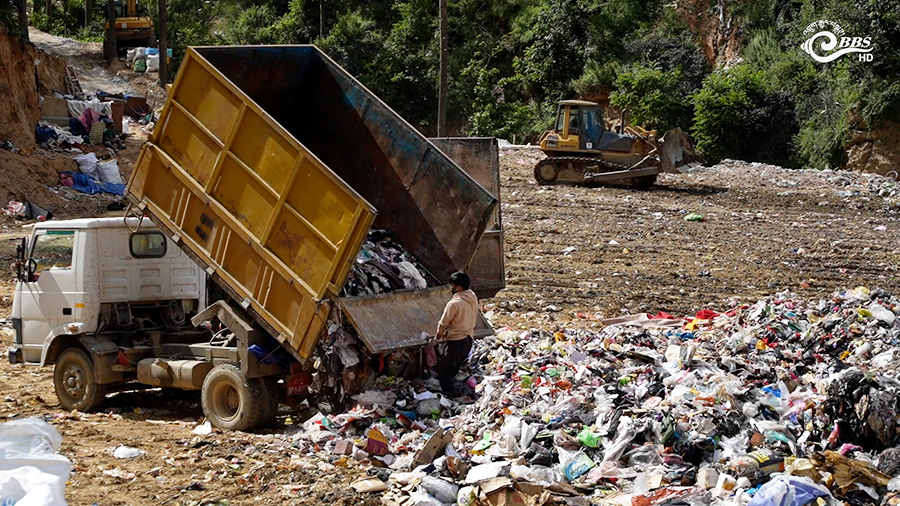 The situation is no better at landfills, where workers are exposed to not only lead but also other toxic chemicals daily.
The situation is no better at landfills, where workers are exposed to not only lead but also other toxic chemicals daily.
36-year-old Jigme Namgyal, a machine operator at Memelakha, works in a cramped machine head where he operates an excavator to compress waste, exposing him daily to toxic fumes released from the garbage.
“The smell is worse when it comes to kitchen waste. In summer, when it’s hot, we have to turn on the AC, and that makes it worse. The smell from outside gets pulled into the machine. I think that is why I get headaches and irritated eyes. Once I step out of the machine, it feels completely different.”
To cope with the exposure, workers break for two to three hours during the day to recover from the effects.
“Methane gas is released from the waste, and it’s harmful to us. When we’re outside the machine and have access to fresh air, the impact is less, maybe around 50 per cent. But inside the machine, where there’s no proper ventilation, the toxic air, especially methane, affects us much more severely,” said Tenzin Dorji, Machine Operator, Thimphu.
According to UNICEF, over 90 per cent of pollution-related deaths occur in low- and middle-income countries, affecting the poorest and most marginalised, especially children.
Tashi Dekar









